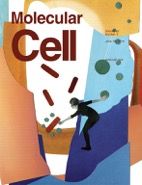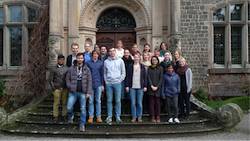News from the Institute

Dr. Anja Bremm, group leader of the Molecular Cell Biology Group at IBC2 and Buchmann Institute for Life Sciences (BMLS) was awarded the 2016 Adolf Messer-Stiftungspreis for her research on the physiological role of deubiquitinases (DUBs) in autophagy, endowed by the Adolf Messer Foundation.
... (read more)
A cellular invasion by bacterial pathogens can immediately be detected on the molecular level. The dynamic changes observed are due to the host cell gearing up for defense and the bacterium trying to achieve its primary goal of propagation.
As published in the current online edition of Molecular Cell, the groups of Ivan Dikic and Christian Behrends have shed light on the dynamic changes within a host cell in response to an infection with Salmonella.
... (read more)
Dr. Christian Behrends, group leader of the Autophagy Signaling Group at the IBC2 and part of the SFB 1177 on Selective Autophagy has been selected to be a PLUS3 fellow of the Boehringer Ingelheim Foundation. The foundation will fund his research with a generous support of around 900.000 € for the next three years.
... (read more)
ALS (Amyotrophic lateral sclerosis) is a rare and severe disease characterized by loss of motor neurons and neurodegeneration leading to death within 3-4 years.
The 2014 ice bucket challenge brought ALS to broader public attention but to date there is no treatment for ALS, despite intensive research in the field.

From 22nd to 23rd of February 2016, the LOEWE Ub-Net as well as associated PhD students and postdocs convened in the historical walls of castle Rauischholzhausen, the seminar house of the University of Gießen.
In two days, all students and postdocs presented their projects and the discussion lead was rotated amongst the participants.
... (read more)